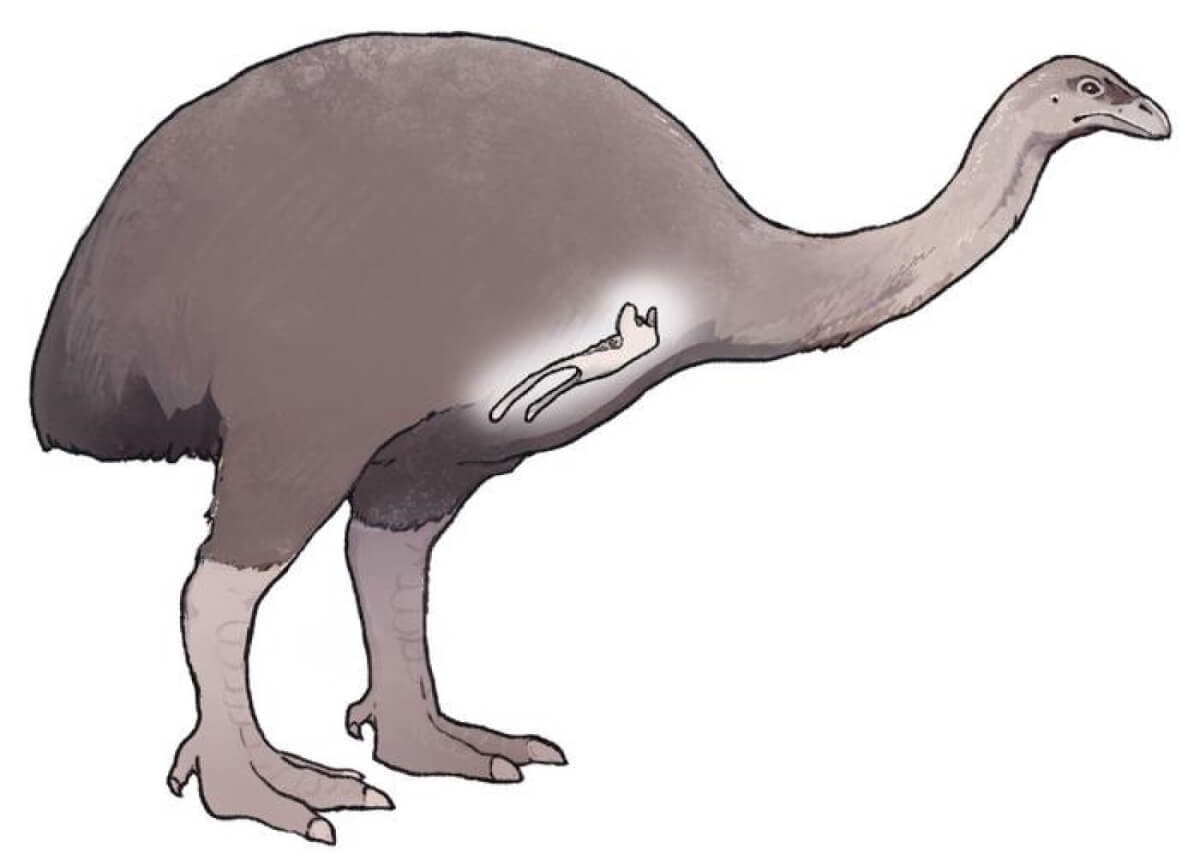
An artist's conception of the little bush moa. (CREDIT: Wren Lu)
CAMBRIDGE, Mass. — An international team of researchers led by Harvard biologists has taken a giant leap forward in understanding the biology and evolution of the little bush moa, one of the extinct flightless birds that once roamed the landscapes of New Zealand. By sequencing and analyzing the nuclear genome of this fascinating species, scientists have shed light on the moa's unique adaptations, sensory capabilities, and the genetic basis of its flightlessness.
The little bush moa, standing at a height of 50 to 90 centimeters (nearly 3 feet tall) and weighing around 30 kg (66 lbs), was among the smallest of the nine recognized moa species. These birds vanished from New Zealand shortly after the arrival of Polynesian settlers in the late 13th century, likely due to human hunting and habitat changes. However, thanks to well-preserved fossil remains, researchers have now managed to extract and sequence ancient DNA from a single toe bone of a little bush moa specimen held in the collections of the Royal Ontario Museum.
Using state-of-the-art sequencing technologies and computational methods, the team recovered a complete mitochondrial genome and nearly 900 megabases of the moa's nuclear genome. This genomic data allowed them to explore various aspects of the moa's biology and evolution, including its sensory capabilities, immune system, and the genetic underpinnings of its inability to fly.
One of the most intriguing findings of the study, published in Science Advances, relates to the little bush moa's sense of smell. By analyzing the bird's olfactory receptor genes, the researchers discovered that the moa possessed a diverse repertoire of these genes, suggesting a well-developed sense of smell. This finding challenges previous assumptions based on the small size of the moa's olfactory bulb, which led some experts to conclude that these birds had poor smelling capabilities.

The team also investigated the moa's visual system and found evidence for the presence of three out of the four major cone opsins, which are responsible for color vision. Interestingly, the moa's short-wavelength sensitive opsin had a specific amino acid change that likely shifted its sensitivity towards the ultraviolet range. This adaptation may have been advantageous for the moa in its forested habitat, allowing it to detect UV-reflective markings on potential mates or food sources.
Another fascinating aspect of the study focused on the genetic basis of the moa's flightlessness. The researchers examined a set of genes known to be involved in limb development and found no evidence of gene loss or inactivation that could explain the complete absence of wings in moa. However, they did identify several genetic variants unique to moa in these genes, which could potentially contribute to the flightless phenotype. Further experimental work is needed to determine the functional consequences of these variants.
The little bush moa genome also allowed the researchers to estimate the bird's long-term effective population size, which they found to be around 240,000 individuals. This result falls within the range of previous estimates based on different genetic markers and provides valuable insights into the demographic history of this extinct species.
Beyond its scientific significance, this study showcases the power of ancient DNA research in unraveling the mysteries of extinct species. By comparing the moa genome to those of other flightless birds, such as the emu, ostrich, and kiwi, researchers can gain a deeper understanding of the evolutionary processes that shaped these unique lineages.
As more extinct species have their genomes sequenced and analyzed, we can expect to gain novel insights into the diversity and adaptations of past life forms. The little bush moa genome is a testament to the remarkable preservation of ancient DNA in fossil remains and serves as a valuable resource for further studies on avian evolution and biology.
EdNews Editor-in-Chief Steve Fink contributed to this report.










